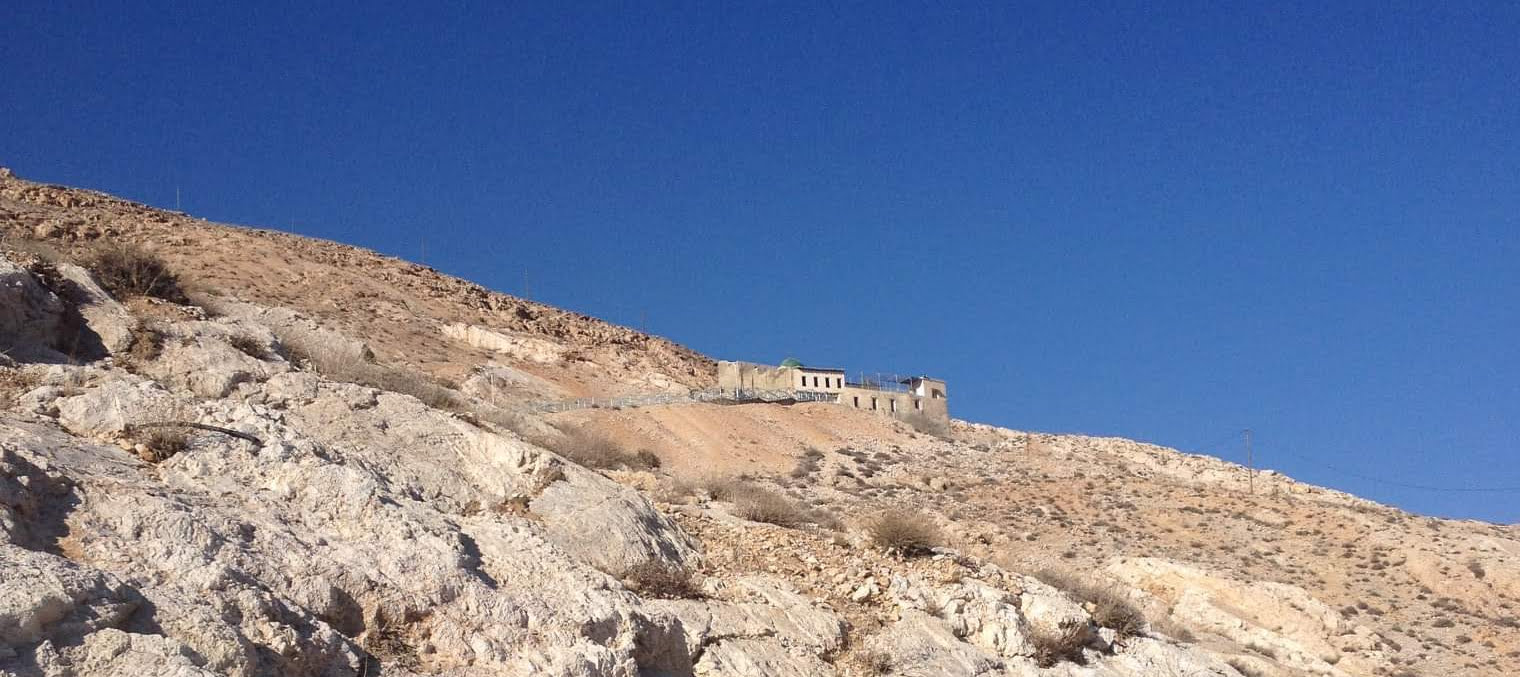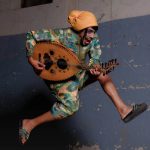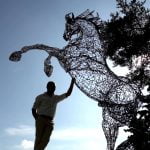The view of Damascus from Mount Qasioun on the approach to the mosque. It was surreal sitting up there all alone. I felt almost apologetic, that I had somehow abandoned the city in her moment of need.
I lived at the foot of Mount Qasioun, in the basin of middle-class oblivion. I often sat on my balcony and contemplated how beautiful it looked. My curiosity always led my eyes up towards the unregulated neighbourhoods that clung to the mountain, lighting it up at night in brazen opposition to the stars. At the very top, perched in solitude, was a small mosque. The houses that had stolen up over time, gave up far beneath it. I longed to visit it. But propriety would frown upon me venturing into a ‘perilous neighbourhood’. I woke up one day, got dressed and set off.
I was eighteen years old. It was the year that I had decided to wear the hijab. I adjusted my lopsided scarf and my abaya that refused to stay shut. The ‘Dr Martins’ peeping out from beneath the only clue to my Britishness.
It was a hot day as I began the ascent. Leaving behind the familiar neighbourhoods and entering the vibrant Shaikh Mohiddin market. Tripping over street vendors selling anything and everything. Navigating an assault of the senses, people to-ing and fro-ing, vendors chanting, buyers bartering. The smell of hot houboub, aromatic spice, awameh being fried. Bicycles rushing by.
Overwhelmed, I turned and found myself at the doorway of a watchmaker. Huddled over his work bench, he looked about a hundred years old. His eyeglass, as if surgically attached, was closely examining what looked like a museum piece. He examined me through his magnified eyeball.
“Amo how do I get up to the mosque right at the top?” I asked.
He answered with a look of dismay: “Do you mean the mountain of 40?”
“Yes, if that is what it is called?”
He smiled, stepped into the doorway and pointed towards an alleyway. “Keep to that path until it forks. At each turning ask another!”
I looked up. All I could see was an impregnable labyrinth of muddled concrete, satellite dishes, tangled cables, corrugated iron and Suzuki trucks squeezing through laden with people and goods. So I snaked my way through the houses that seemed to be holding onto the side for dear life. The roads gradually got narrower the higher I climbed, until they became a breezeblock maze of sporadic confusion. I was guided by the people pointing me up unprompted, as if they knew my direction, my middle class attire asking the questions for me. Children giggled and smiled as I passed, some following behind me as if I were the pied piper. Pigeon fanciers swirling their staffs, as their flocks flew up above. There was no danger here; only poverty.
Then, finally, the urban jungle spat me out and I found myself at the foot of a winding staircase. Up and up with the sun mocking me mercilessly. Behind me, far below, sprawled the plateau of Damascus. I stood to catch my breath. The steps finished and it was now the rocks my boots coursed over, my abaya now filthy from dragging along the ground. Finally, I reached an iron door. I knocked, the Shaikh opened.
“Young lady what brings you here?!” He had a kindly face. “I watched your ascent. You do realise robbers hide in those caves along the way!” He beckoned me to come in. I was greeted by a smell of incense and a peaceful silence in this retreat that was almost in the clouds. Rooms of contemplation were lavishly lined with hand woven rugs, while the windows watched over Damascus. An obstinate tree grew in a meticulously kept courtyard. A terrace that was blessed with the sun. “So I suppose you want a tour then?” he asked as he forked out a key from his gallabiyah. “Follow me.”
We walked down some steps towards a large wooden door. It opened onto to a dark cave, partially lit by one very lonesome bulb. A macabre shrine to where Cain supposedly killed Abel. Legend has is it that the mountain tore open in horror to reveal a mouth and tongue-like formation in the rock. And gathering at the bottom, a pool of water, the dripping tears of sorrow at what atrocities humans are capable of.
Then he took me back up the stairs, beyond the courtyard, to a marble staircase, so worn over time it was more of a slide. The stairs lead to a prayer room that smelt as old as time. There were 40 niches in the walls – the room of the 40 prophets that protect the city. Two children then ran in and almost woke them up.
“Baba, we are back!” the Shaikh’s children shouted, before looking astonished at their visitor. We retired to the terrace for a late morning breakfast. There I was sitting eating with a holy man, sitting in a place Ibn Battuta had sat and had recounted in his memoirs. Sitting there eating eggs, hot bread and fresh tomatoes, drinking sweet tea as the Shaikh began the call to prayer. Trying to adjust my scarf again and contemplate how different this was to my life back in England. At that moment I understood why my father thought it important that I know Damascus.
On my return to the mosque in January 2017, I was aghast to find a now derelict building. There was extensive damage throughout, including the broken glass as is evident in the photo, burnt out carpets and the wooden doors had all been ripped off the frames. On knocking on the front door I found it to be slightly ajar and the lock broken. No smiling sheikh, no incense, no life. I returned in the hope of retracing my beautiful memories that I had carried around with me across the world. It was not only the rock that was crying at humanity’s crimes; but an entire city.
The view of Damascus from Mount Qasioun on the approach to the mosque. It was surreal sitting up there all alone. I felt almost apologetic, that I had somehow abandoned the city in her moment of need. Oblivious to the danger around me, unable to process the grief that adorned me. I had travelled all this way for answers I did not have questions to. All I could do was scatter my thoughts upon the mountain side, and add to the tears of the crying rock.






